10 Things You Should Know Before Becoming A Tattoo Artist
Being a tattoo artist seems easy; you got the needle and some ink and you’re good to go. However, doing tattoos requires much more work than it may seem at first. When we say ‘more work’, we mean hard work that could last for years, and might not even pay well or at all.
However, don’t let this discourage you; if you’re passionate about art, drawing, and design, then becoming a tattoo artist might be an excellent choice for you. However, learning new skills and getting enough experience, or working alongside other artists will be an important part of the process.
Now, that we’ve got the essentials out of the way, let’s take a look at what else it might take for you to become a professional tattoo artist!
10 Things You Should Know Before Becoming A Tattoo Artist
- If you’re good at drawing, it doesn’t mean you’ll be good at tattooing!
- Becoming a tattoo artist doesn’t mean you’ll become rich; at the beginning of your career, you’ll probably work for free!
- You don’t have to go to a tattoo school to become a tattoo artist!
- Prepare to invest heavily into a tattoo machine and tattoo equipment!
- No one can guarantee you success in the industry; you may or may not become successful and have a profitable business!
- Don’t expect your every tattoo to be perfect; there will be times when you mess up, badly!
- You’ll have to learn to say NO to customers’ bad tattoo design ideas!
- You’ll have to learn to be extremely focused on tattooing only, for hours!
- Expect to start having back issues, pain in the arms, and neck after only a few years of tattooing!
- Becoming a tattoo artist will take a lot of hard work, and we’re talking about years of dedication and commitment!
Becoming A Tattoo Artist – Essential Requirements
1. Learning To Draw
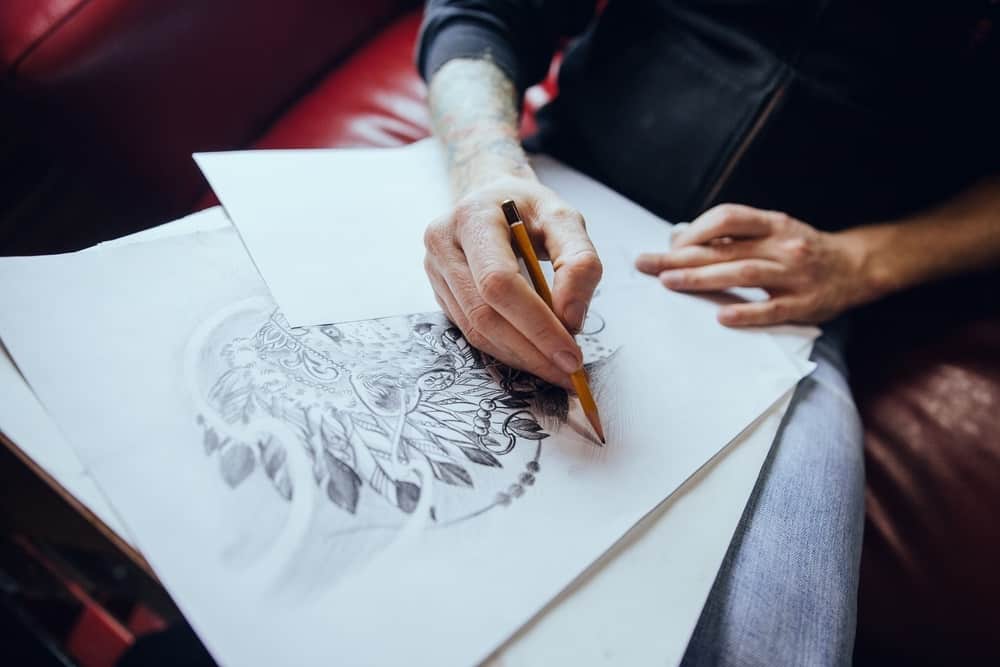
Let’s start with the assumption that you’re passionate about drawing but you still need some practice and experience in creating a visually appealing drawing. Well, even if you’re good at drawing, you will still need to learn and practice new drawing techniques.
So, the first step to becoming a tattoo artist requires learning and practicing drawing. Here’s what this process may comprise;
- Practicing drawing skills – this step will require several sketchbooks and pens or pencils. You will use your sketchbook to draw shapes, objects, patterns, and create designs on your own. You should practice until you feel comfortable enough to go with any design you can think of.
- Exploring drawing techniques and methods – while you’re practicing drawing, it is important to go through different drawing techniques and methods. This will get you a better sense of how the tattoo design is developed and help you understand how a design will apply and look on the skin. Some of the drawing techniques include perfecting the lines, working on details, learning to keep the design simple, and learning when to stop when the drawing is bad.
- Exploring the work of professional tattoo artists – to learn and perfect your drawing skills, you need to learn from the best. Famous tattoo artists like Keith Bang Bang McCurdy, Chris Nunez, Gerhard Wiesbeck, Yoji Harada, Mirko Sata, and many others, can serve as great examples of different tattoo styles and how each style is being translated into a tattoo design, and finally a tattoo.
- Exploring art movements and tattoo styles – learning about different art movements can help you create your drawing style. You may find a movement, or a tattoo style that speaks to you, your abilities, and your creative mindset. This way, you may discover that you’re good at creating abstract art, or more realistic drawings. Either way, this step is rather essential in the whole process of becoming a tattoo artist.
2. Getting Educated

Proper education is important in any career, and so it is when it comes to professional tattooing. For you to become a well-rounded, professional tattoo artist, you need to get access to traditional art knowledge and skills.
This may seem like a time-wasting step, but it’s far from that; it might be one of the most important aspects of the process if you’re planning on having a serious career. So, here’s how you can get educated;
- Taking art classes – don’t worry, you don’t have to spend a fortune on taking art classes. Try attending affordable art classes at your local community college or educational centers. There, you can get a great insight into the basics of art, drawing, painting, art movements, etc.
- Getting an art degree – now, this a more serious approach that requires complete dedication. It is also not financially suitable for the majority of people, but it is an option. Getting an art degree or a degree in graphic design, design, digital arts, illustration, can help you develop strong art skills, which will serve as a background and a stepping stone for your tattoo career.
- Exploring graphic design – whether you decide to take classes at a community college or attend an art university, it is important to get educated on graphic design. By exploring graphic design, you’ll learn about shape, texture, shading, color, value, size, line, etc. Background in graphic design will help you get a better understanding of what it means to translate a design from paper onto human skin.
3. Gathering Your Art Into A Portfolio

Gathering your work and art in one place will help you get a potential mentor or apprenticeship in a tattoo shop.
It will make it easier for people to go through your work, figure out your style, and see if you fit what they’re looking for in a potential tattoo artist. Here’s how you’re going to create a portfolio;
- Make it look professional – your portfolio needs to look professional if you want to grab the attention of potential mentors. So, try using binders with sheet protection, or have the pages matted. This will make the portfolio easy to go through and make your work stand out. Not to mention that it will look professional, sleek, and show that you’re taking your potential career as a tattoo artist seriously.
- Choose the right work – of course, you’re going to include your best art in the portfolio. But, what comprises your best work? Well, that should be art that is the best representative of your style, drawing skills, and ability to handle detailing, color, and shading. Include work that shows that you can draw objects, patterns, shapes, characters, figures, etc. There should be work that is in black and white, as well as in color. So, decide to go with your strongest pieces that show your potential for creating excellent tattoos.
- Include original work – many people tend to make the mistake of including their variations of someone else’s work. We don’t recommend you do that. Try to include your original work in the portfolio. Only then will potential mentors see your actual talent and ability to create unique designs.
4. Working With A Pro Tattoo Artist (Mentoring)
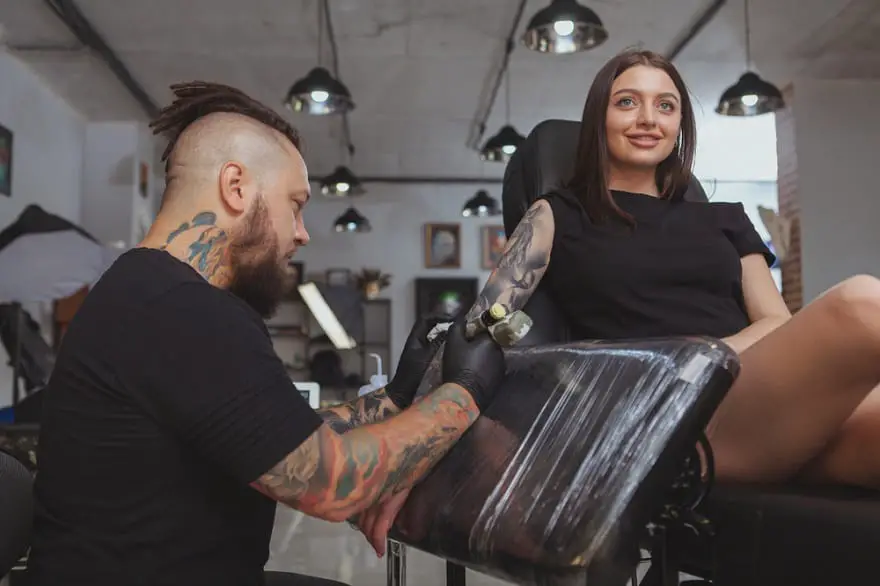
The best way to learn about tattooing is to work with an actual tattoo artist. This will provide you with an insight into the real-world environment of tattooing and help you learn and practice new techniques.
Here’s how you can get a mentor;
- Pay a visit to several tattoo shops – of course, going to tattoo shops physically in the middle of a pandemic may not be the smartest decision. However, if you live in an environment where you can go out so long you keep a social distance, then try to do a face to face exploring. If that’s cannot be done, try contacting some tattoo shops via email or phone, and ask about their apprenticeship. Of course, in such a case you’ll have to send an online form of your portfolio.
- Explore potential mentors – while you’re contacting tattoo shops, it would be smart to do some research and explore the bios of your potential mentors and professional tattoo artists. This will help you present yourself to the people at the shop, and adjust your portfolio accordingly.
- Ask about the important things (like the cost of the apprenticeship, and the nature of apprenticeship contracts) – while in contact with potential mentors and tattoo shops, don’t forget to get information regarding the cost of the apprenticeship and well as an explanation of the legal documents regarding the apprenticeship contract. You should know, for starters, that some tattoo shops do offer free mentorships, but those are incredibly hard to get. Others, however, offer mentorships that cost between $5,000 and $10,000.
5. Learn And Practice Everything Tattoo Related
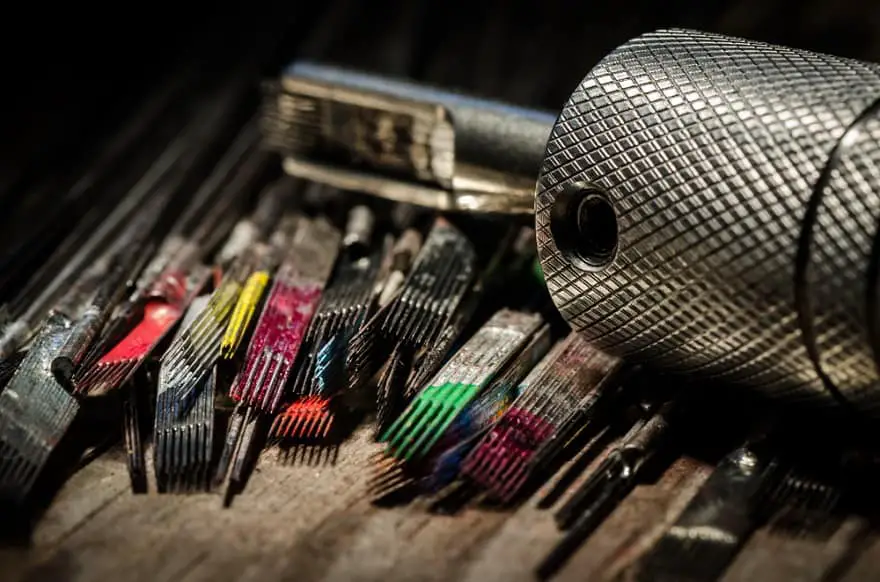
This step is pretty straightforward. At this point in the process, you need to learn about the art of tattoos and complete the apprenticeship. Here’s what you’ll be doing during this time;
- Buying equipment – remember that you’ll have to invest in your equipment, which will add up to your apprenticeship cost. The equipment usually includes tattoo guns, art supplies, sterile equipment, etc.
- Using tattoo equipment – alongside all the other work, as an apprentice you will learn how to use the actual tattoo machine. You will have to study how the needle works with skin, and how the needle needs to work differently depending on the type of skin, or even customer.
- Practicing tattoo designing – at this point, you will know how to draw a design on paper, but you’ll need to practice designing tattoos that will end up on a human body. You will study the placement of tattoos onto the body, how they look on each body part, and how you can go through the actual tattooing process, with all the detailing, coloring, etc.
- Practicing hygiene before, during, and after tattooing – adopting proper hygiene practices will be crucial during your apprenticeship. You will need to learn to adopt certain standards of hygiene to meet the requirements of your client and your tattoo shop. Any hygiene issues can be potentially dangerous and result in your client’s health issues. Such issues will affect and potentially ruin the shop’s reputation. It is a general practice for the apprentice to check the mentor’s hygiene practices before accepting the mentorship.
- Working for free – one of the most common practices during an apprenticeship is for the apprentice to work for free. In exchange, the apprentice gets all the practice and experience required to become a good tattoo artist. Because of this, we advise you to come up with another source of income and start saving even before you get to the stage when you’re an apprentice.
6. Getting Licenced
After you’re done with the apprenticeship, it is time to get a certification and a license proving you’re a proper tattoo artist and allowed to work or open your tattoo shop. Here’s what you’ll need for this step;
- Classes and training in disease control, disease prevention, and other health care concepts – you’ll probably need to go through a bloodborne pathogen certification program as well as programs regarding disease control and prevention. As a tattoo artist, you need to know everything about tattoo-related health issues (HIV, Hepatitis C, etc.), how they can be spread, and how you as a tattoo artist can prevent them. After you’re done with these programs, you’ll go through tests of knowledge and get certifications.
- Applying for a license – before you apply for a license, make sure to check your state requirements. Some of the requirements may include a certain number of training hours, mentorship by professional tattoo artists as well as a certain number of tattoos you’ve done. After you’ve checked the prerequisites, and it turns out you meet them all, you can apply for a license with your local department. You might have to pay a fee, but make sure to check that info as well since it varies from state to state.
Read More: How To Get A Tattoo License: In-Depth Guide Through Your Tattoo Artist Journey
7. Starting A Career As A Tattoo Artist

That’s it! You’ve got the license and you’re at the final step of this long and exhausting process. But, you’re here, and here’s what you have to do to finally start a career as a professional tattoo artist;
- Buying your equipment – you may own a tattoo gun and some basic equipment. But, to become a professional tattoo artist you will need to invest in equipment including sterile needles, tubes, grips, needles for shading, needles for coloring, spray bottles, cleaning soap, ink bottles, etc. All of this supply will be essential in your tattooing process.
- Applying for a job – as a licensed tattoo artist, you can apply for an actual, paid job at any tattoo shop you want. So, start looking for open spots at tattoo shops, and see which shop offers the best working environment. Make sure to update your resume and portfolio and include your new and improved work and even photos of tattoos you’ve done during your apprenticeship.
- Becoming your own boss – this may be a harder path for you, but opening a tattoo shop is a fair consideration for a career. However, it will cost you some extra money! You will have to rent a space, invest in new and suitable furniture, extra equipment and you may need to hire some people to work along with you. We recommend you try working at a tattoo shop first, save some money, and then pursue your own business, just to get some experience and additional knowledge of the industry.
Also Read: How Much Do Tattoo Artists Make?
Final Thoughts
Hopefully, we’ve provided you with all the starting information you need. For more information, make sure to check with your local tattoo shops, or try contacting some tattoo artists in your area.
Make sure to check the license requirements for the state you live in and see how you can get the needed certifications and a license.
We also recommend you to consider saving up some money because you will need to pay for an apprenticeship and invest in your own equipment. Becoming a tattoo artist is not easy nor is it cheap.
However, if you’re truly passionate about this profession, then it is worth it. Either way, we wish you all the luck in your future endeavors!
- Safe, non-toxic plant-based temporary tattoos made with 100% high-definition printing for a realistic look without the pain
- Easy to apply and remove - just stick for 20 seconds then take off
- Set includes 5 sheets with 17 fun, delicate designs like hearts, cats, smiles, suns, moons, and more
- Waterproof and long-lasting - stays on up to 2 weeks of wear
- Fashionable for women, men, girls and boys
- Place on arm, wrist, neck, leg, finger, waist, foot and more
- Great for parties, birthdays, and showing your unique style

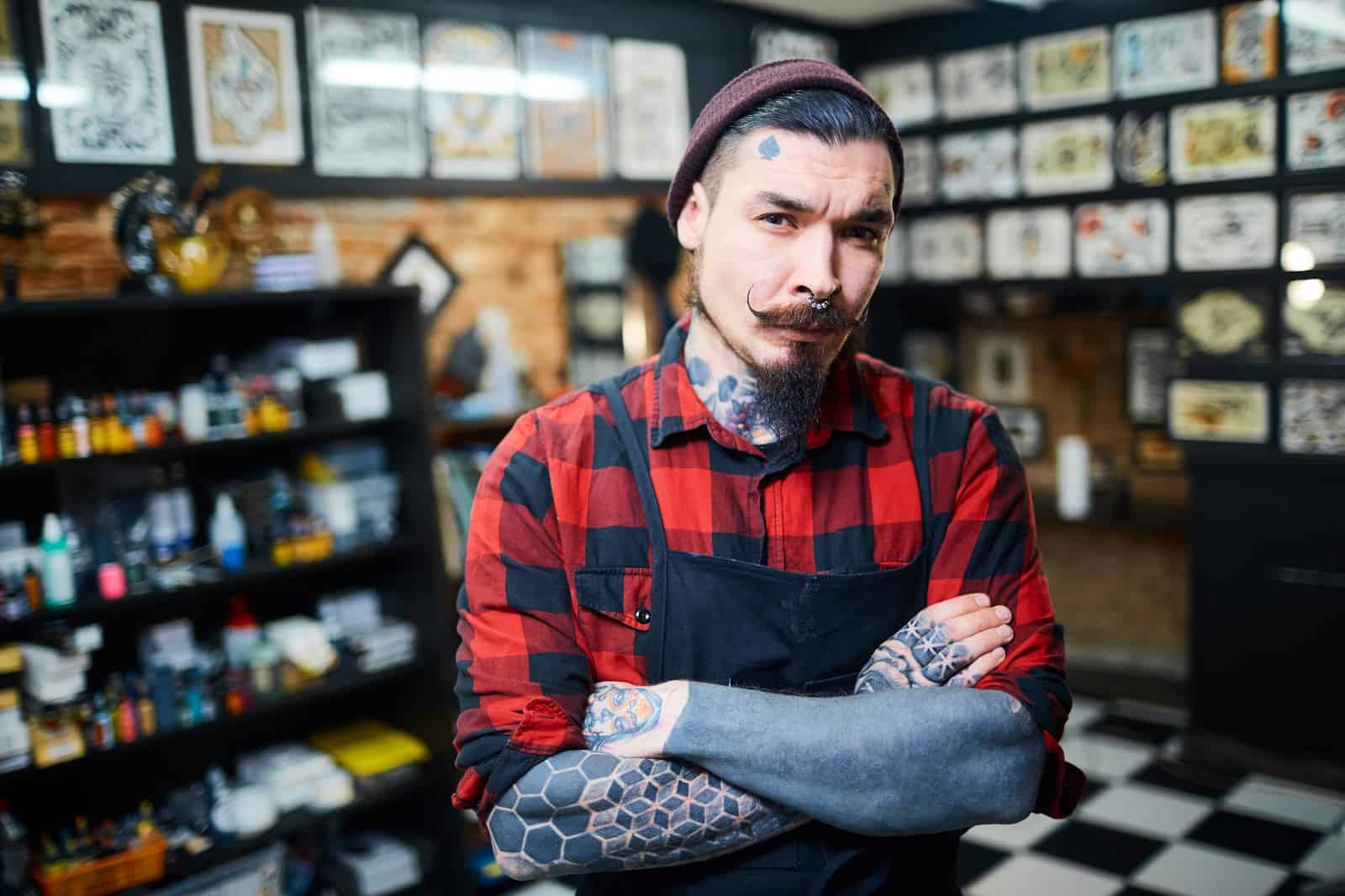


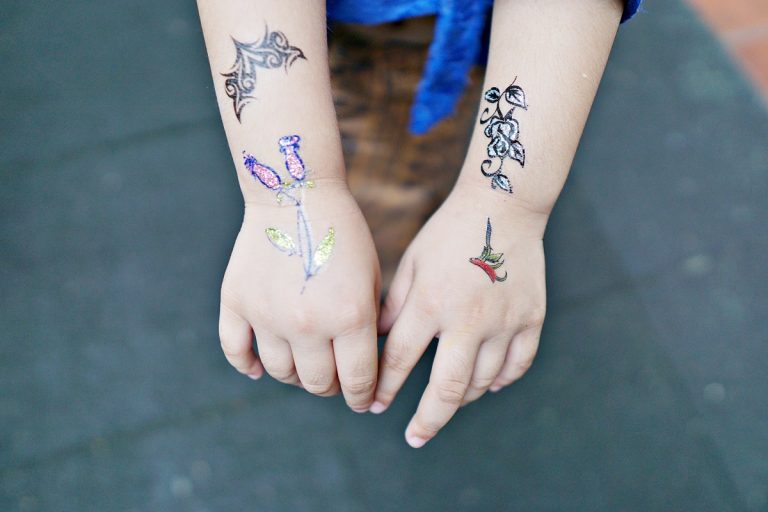
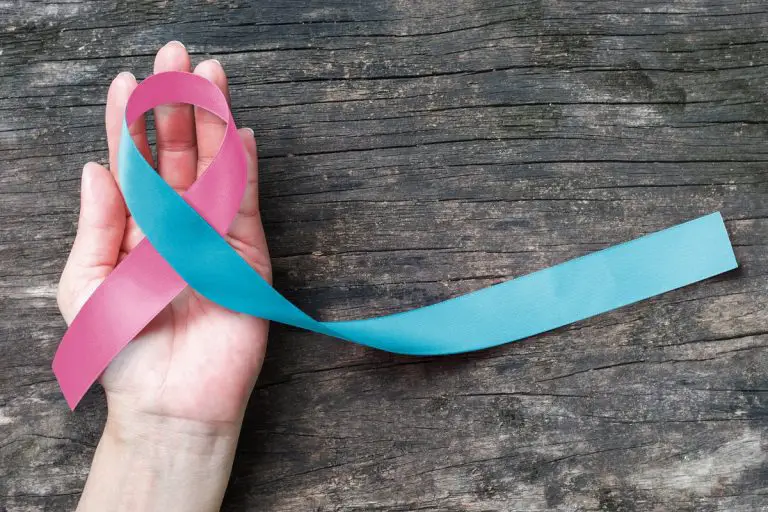
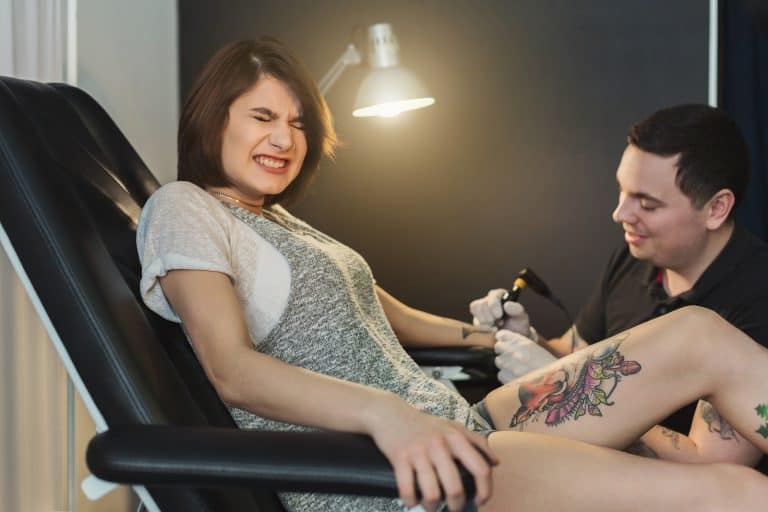
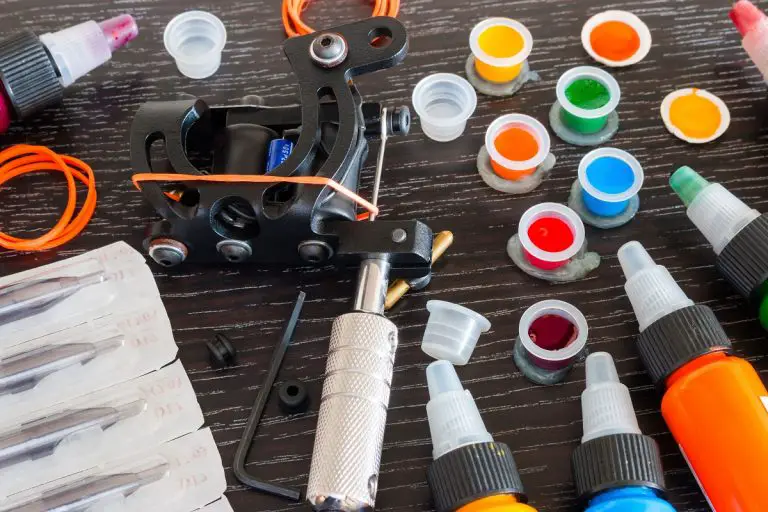
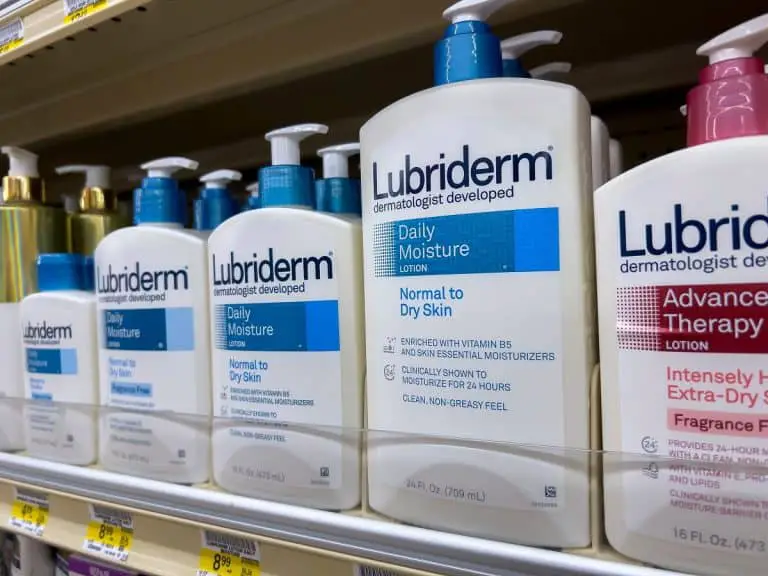
Quite helpful